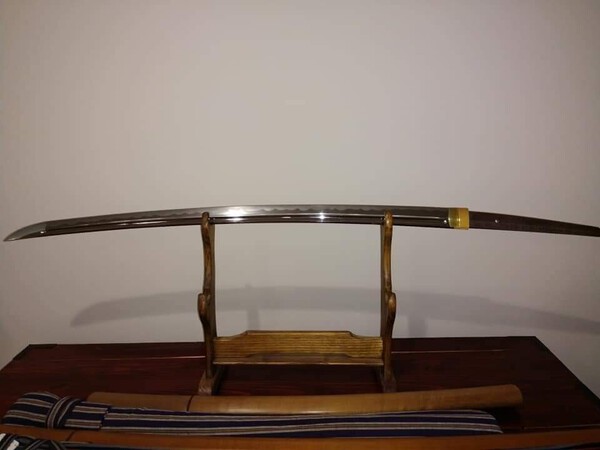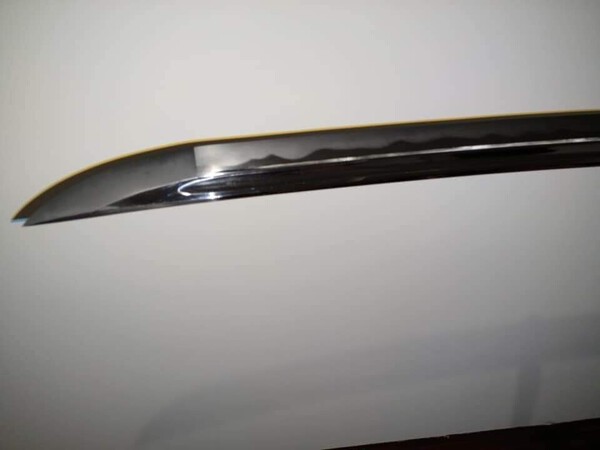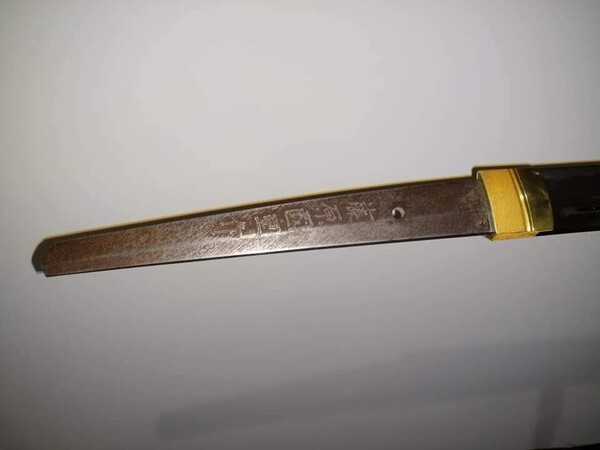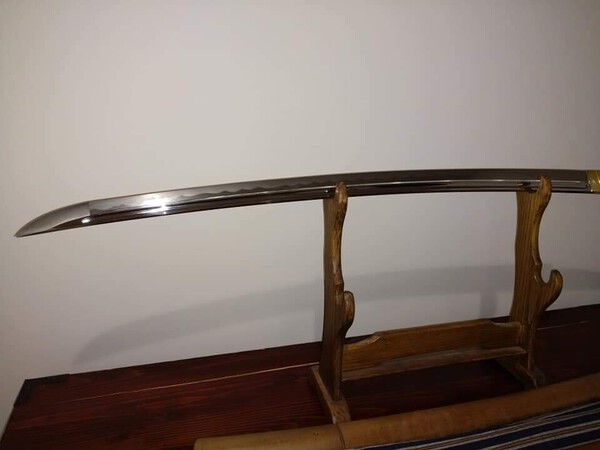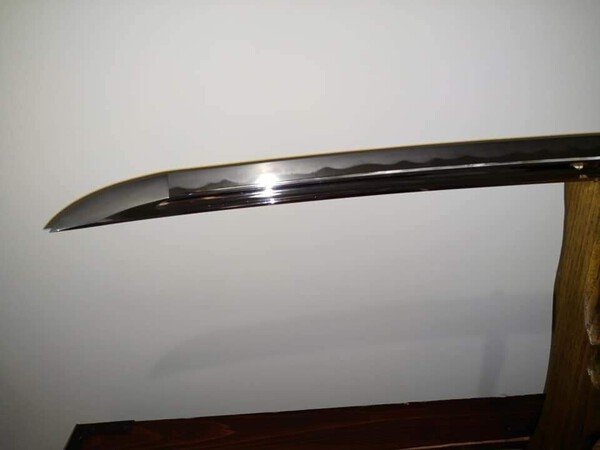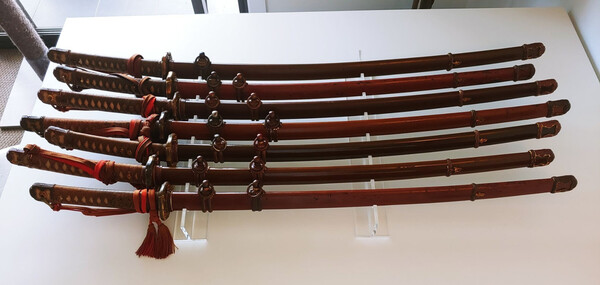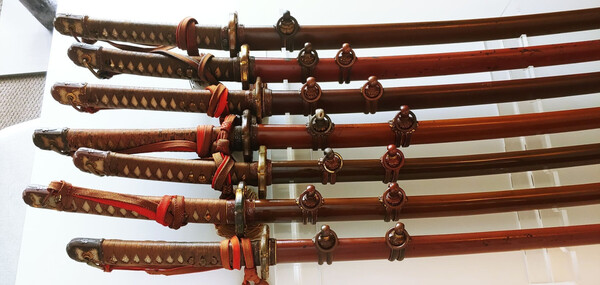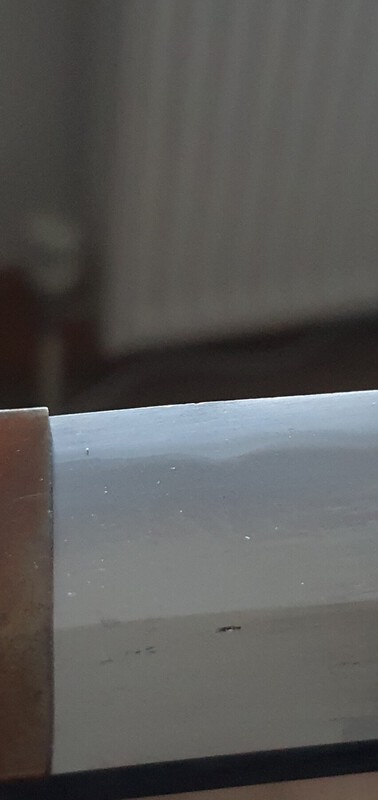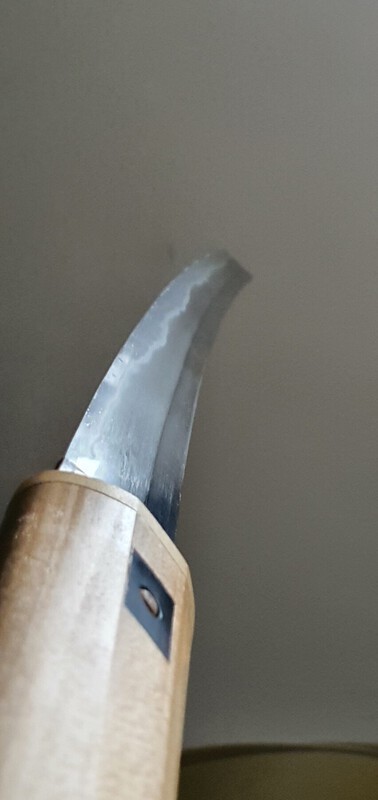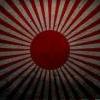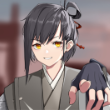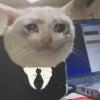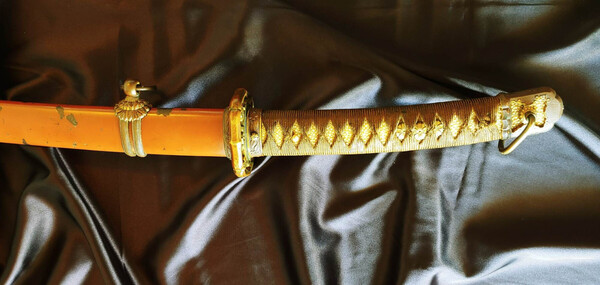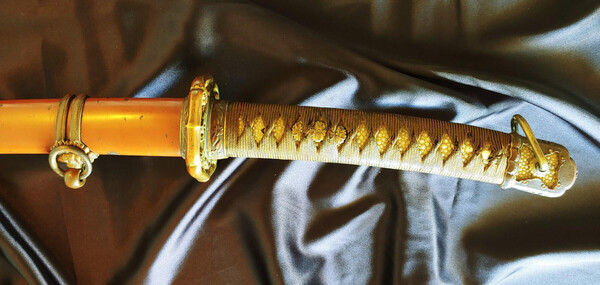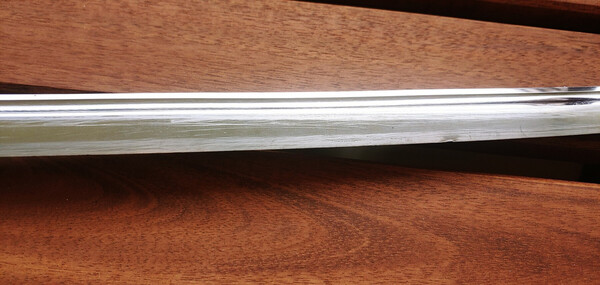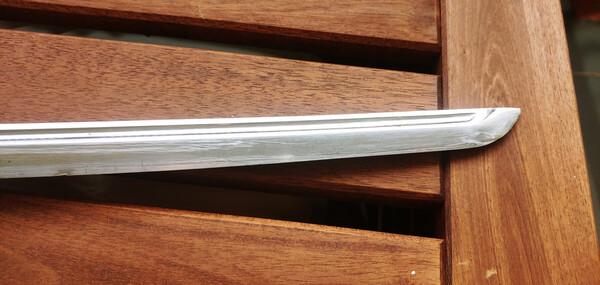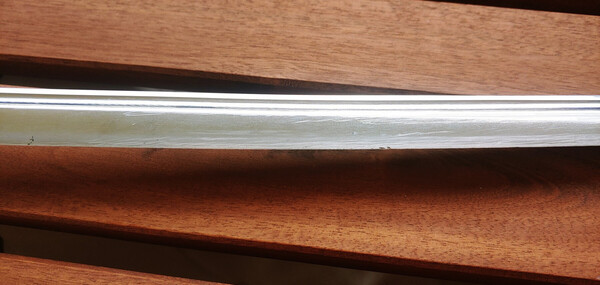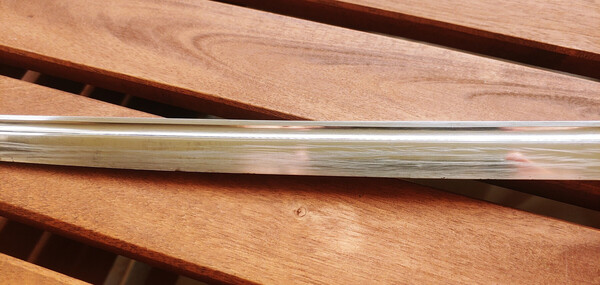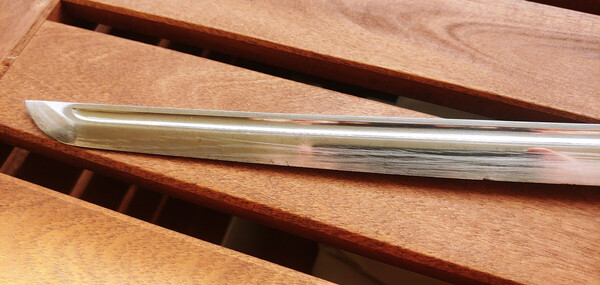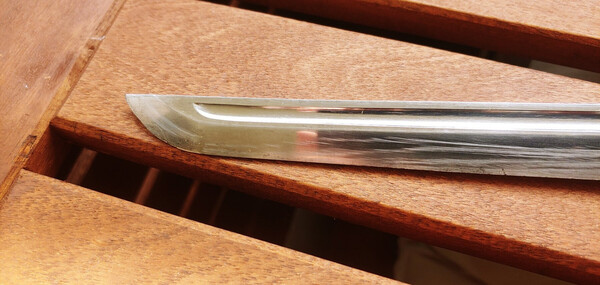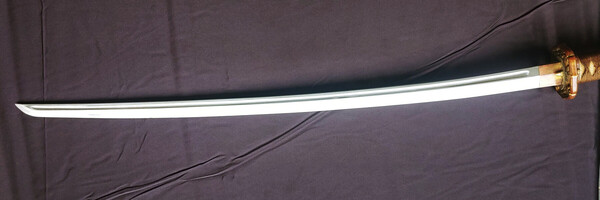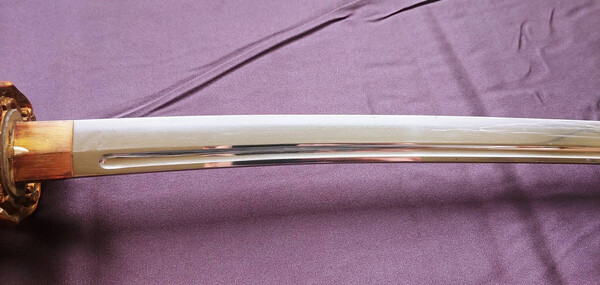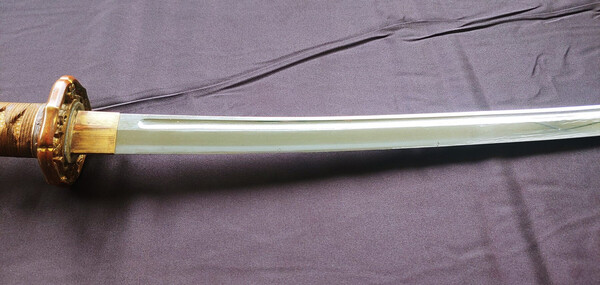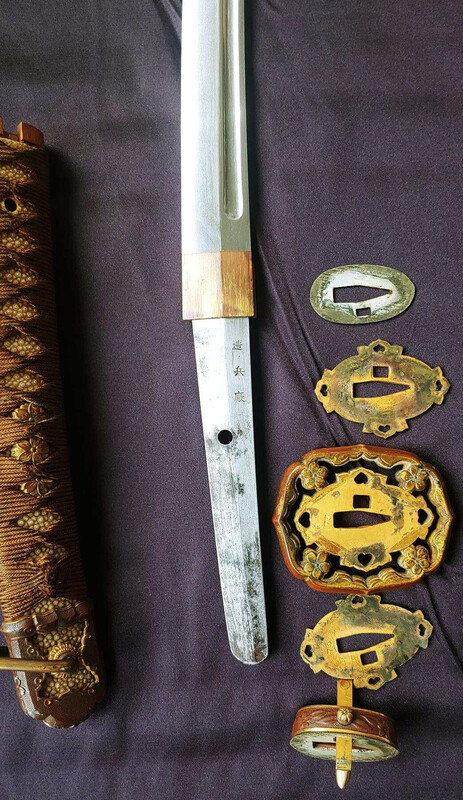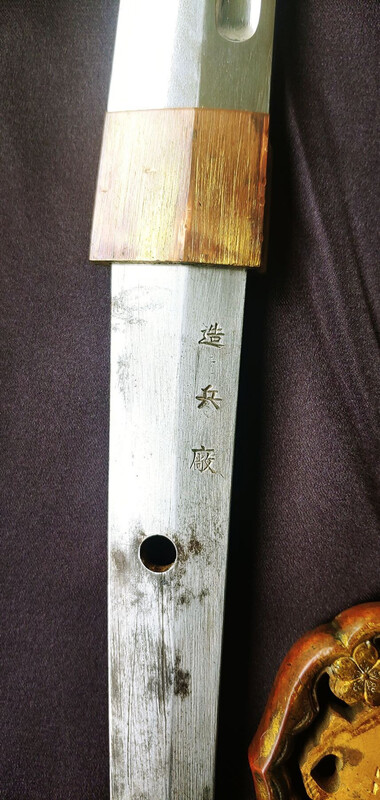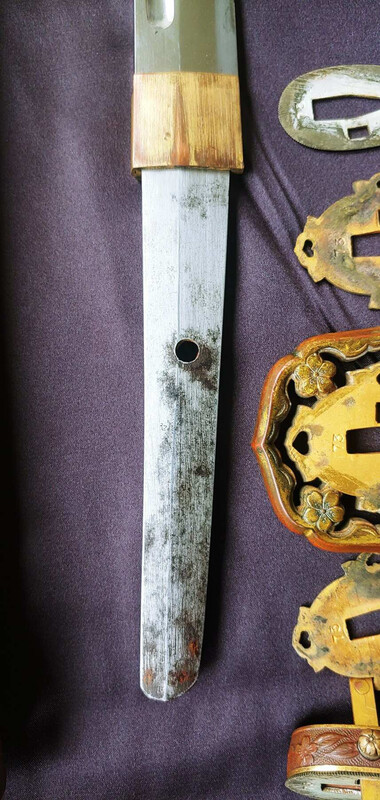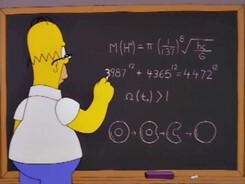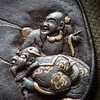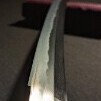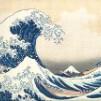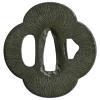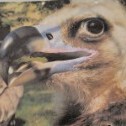Leaderboard
Popular Content
Showing content with the highest reputation on 04/20/2022 in all areas
-
Something robust ! Shinshinto Katana signed Fujiwara Kunishige - dated 1861 77.5 cm NBTHK Hozon A very hefty sword. It's been said that Samurai who carried extra long swords at this time were mostly rebels who supported the Emperor. Those that supported the Bakufu tended to carry swords that were shorter and more resembled Shinto swords perhaps to allude to a time when the Bakufu was in control.7 points
-
Hello Will, welcome to the world of Japanese swords. This interest can become a passion that can stay with you all your life. The subject is challenging and complex and never ever boring. It can generate great debates! Real Japanese swords (Nihonto) come in many sizes, styles and qualities…..from breathtaking works of art to functional fighting weapons. And that is just the blades…..wait until you encounter some of the stunning fittings that can come with them. In my opinion (hopefully shared by all on this forum) the blades are the finest cutting weapon ever made by us humans and some of the the fittings defy you believe that we humans actually made them. You have not got off to the best start…..not many of us did. I certainly didn’t. You have found a Chinese fake. There are probably millions of them all over the world. Don’t let that put you off. Get on Amazon and buy a few books. Anything you read will start to build knowledge. Take your time. Find a reliable dealer. Read what kicks off on this forum. Don’t buy anything else (one fake is enough!) until you get some of the “basics” and you find someone you can trust. Later you will be able to make your own mind up. Above all buy what you like……not for investment but for pleasure. (No doubt I will be contradicted here!). Good luck! Bon voyage. Colin4 points
-
4 points
-
I acquired this item from auction to add to the collection of the Royal Armouries Museum in Leeds whilst I was a curator there. Its origins were the result of the Tokugawa Shoguns policy of closing the country. Initially they decided in 1634 to restrict the Portuguese and control the spread of the Catholic faith by isolating them on an artificial island, Deshima or Dejima, in Nagasaki harbour where they could be controlled but still trade. However the Shimabara rebellion persuaded the Shogunate to ban the Catholics all together in 1639. Whilst still wanting some trade with Europe, they moved the Dutch from their base on Hirado to Dejima. In gratitude for the hospitality shown by the Matsura clan of Hirado, the Dutch presented Matsura Hoin with a gift that included at least two pikeman's armours, swords and perhaps guns, although as far as I know they no longer exist. This aikuchi was made from a Solingen sword that formed part of this gift. The maker's name and the words 'Soligen fecit' and the date it was made are inscribed in the fuller. Matsura Hoin had the pikeman's armours made into a Japanese style namban armour,presumably at the same time as he had the Soligen sword made into an aikuchi. Ian Bottomley4 points
-
There was a long discussion of this on this site in 2020. I have seen Bakamatsu swords that are longer than usual with a flatter sori referred to as Kinnoto style. I don't think sword smiths adhered to specific dimensions and have never seen a origami designating as sword as Kinnoto. Just like Satsuma rebellion sword fittings are called such because they were lower quality and put together , often with plain pieces of metal in place of menuki. There are no specific designation of Satsuma rebellion fittings.3 points
-
@Geraintand @Matsunokithank you both for your kind words. I have done some decent research on Tanba. There was a thread on the forums from last month which had some info. From my own research he was from Mino province and had moved to Edo later on in life. One of his blades was owned by Isami Kondo, and he also made swords in southern barbarian steel (dutch steel ) Nanban tetsu. He was part of the yoshisada school Mino. @Shugyosha of course John, I will try and get some more for you by Friday. The second photo is better. I'm happy to post up the Oshigata, if you wish to have a closer detailed look of the hamon shape.2 points
-
The only positive aspect of a "Hozon" paper with no information is : It is the opinion of the NBTHK that the objekt in the paper in genuine! So not a Chinese or another fake ! Sound funny , I know.....but I had a hard lesson learnd with a tsuba several years ago. I thought it was a old good original one.......no bullshit . It was a modern copy ....made as looking old. Just my two cent.....2 points
-
It really does entirely depend on condition, John. As the roughest guide, you should be looking at $2,000USD for a poor condition but complete and original sword, up to $8,000USD for a really nice matched example. There are some variations to the earlier numbers that makes them a little more desirable to collectors, but 2,400 will be outside that range. Based on what you're describing the condition to be, I'm going to guess you are at the middle to lower end of the scale. Green paint (any amount of) is far more desirable than the gilt you describe on the saya. Marks and pitting on the blade sound like a detractor too... but we need photos to judge the extent. I'll add that there is a great example of one of these coopers on eBay right now. It's set to $5,000US ONO. It has been there for months, I'm assuming becausethe serial numbers are mismatched. There was (and I assume still is) a far poorer example, which is priced higher, but matching. You can take this as an indication that the market currently considers $5,000USD too much for a really nice but mismatched copper and $6,000USD too much for a matching but poor condition sword.2 points
-
According to NBTHK shinsa criteria, Edo and earlier blades with correct mei, or mumei blades on which the time period, kuni and school can be identified, may receive Hozon paper. However, this paper doesn't identify anything!2 points
-
Might have mentioned this before John?....but in the case of this name OSHIMA being written on the tsuka, the missing mon was unlikely to have been an Oshima mon as the information on the sword says the owner was 2nd Lt KUME (unless he was a linked branch family to Oshima?). Regards,2 points
-
2 points
-
Hi Just for our entertainment and inspired by others, i will also try to make a Kantei thread. The blade is Unokubi-zukuri and the Shinogi is high. Nagasa: 55,2cm Kasane: 0,58cm Sori: 1.05cm Moto-Haba: 2,9cm Saki-Haba: 2,6cm Weight: 520g I Hope everything else can be seen in the pictures. The Nakago is hidden but i can later add it when it is too hard, its only by pictures after all. I hope for many participants and i will let it run for a week or some days more. Please forgive the dust on my camera lens. Have fun and Happy easter.1 point
-
A nice Zohei-To or army arsenal sword in good early mounts. This sword has the uncommon " 造兵厂 - Zoheisho" Mei and small Kokura stamp, the same Mei can be found on page Page 68 of Swords of Imperial Japan 1868 - 1945. These are the early Type 94 mounts with pronounced curved Tsuka, pierced Tsuba and gloss Saya, without the removable Ashi. The blade is is decent condition, with scratches around the Monouichi. There is some paint loss to the Saya. All fittings are matching and are marked with "73". OAL: 98cm Nagasa: 65cm1 point
-
Thanks Paul and Kirill! Hizen it is, then wonder into maybe Hosho. If only Roger Robertshaw's print book didn't cost an arm and a leg. The PDF on his website is $39.99, but I prefer physical books. I wonder if anyone has created a step-by-step process for studying schools for beginners. What I keep running into is a mass of information and if there is no Token Kai or any sword club around, it's intimidating trying to sift through the wealth of information. Interacting here on the website is priceless, so it's a good place to start. I think I'll brainstorm a little about my journey into studying nihonto and develop an system of information organization that can be adapted to beginners who want to go deeper.1 point
-
Hi Will. Welcome to NMB. Sorry that you got stung with this replica. I hope this doesn't put you off finding a real Nihonto in the future. I would venture to guess that there are probably more fakes than real swords in the wild outside of Japan. Your best bet is to buy from a dealer listed on this site or buy from the For Sale or Trade section. You can be sure that you will be getting the real deal if it is listed on this board.1 point
-
1 point
-
These come up fairly often, so no hurry. I am sure you’ll find something suitable in due course!1 point
-
What I said was 'ownership by the Tokugawa family'. Meaning that the presence of an aoi-mon doesn't necessarily mean the sword is a Tokugawa-denrai.1 point
-
I don't see any reason for keeping the actual serial number a secret... you have given us the range already, and it is something every 'prospective' buyer would like to know in advance i believe. Is this the same sword you show in these old posts here and here ?1 point
-
Suggest posting it here, and getting the knowledgeable members to verify it's 100% correct. That will help a lot to your value, buyers here will always be confident if something passed "inspection" by our NCO experts. Then you will have a better idea of value, and can list for sale in the right section, and maybe get some decent offers.1 point
-
Do the multitude of basic mumei yari we see, have school or smith attributions if they get papered? I can see why they did this. It's not something needing an attribution. Just that it's real and not a modern fake.1 point
-
Ah, now I understand your question! The fact that they have called it a Kikuchi Yari means that the place and date are obvious to anyone who knows the history of these blades. In other words it’s the real Ma Koi. Motto of the NBTHK: “Never write one word more than necessary.” We all have to learn to read between the lines!!!1 point
-
This is perfectly normal. It's not the first time I've seen a hozon for a kikuchi yari. It never says more than kikuchi yari and mumei. What more can you write about it?1 point
-
Your sword is gorgeous, it looks very powerful with its long kissaki. Are you alluding to a kinnoto in your description ? I remembered (from Aoi Arts pictures) that kinnoto had an extra long nakago (among other things) that I can't see on your sword so I checked Markus' encyclopedia of Japanese swords and I don't think your sword qualifies as one: the nagasa should be at least 80 cms and the nakago is too short (once you've seen a kinnoto nakago, you just can't forget it).1 point
-
Although the sugata appears to be typical for a nanbokucho period sword, I would guess the wakizashi was made by the shinshinto master Sa Yukihide.1 point
-
It’s not just similar, I confirm it’s the exact same sword. I agree and let me reassure you @SteveM; I’m grateful for your input, whatever the conclusion. You are only replying in good faith to my message and I appreciate it. I’ll definitely need to dig further into this…1 point
-
Looking at it once again I feel the nie is a bit too ill defined for Yamato... Echizen Rai?1 point
-
A fascinating object. The original Matsuura (‘Matsura’) Mon had no circle around it. I wonder when they (or which branch of the family) added the Maru…?1 point
-
Would love to see nakago and definitely boshi on this one. Suspect its shinto but can be a decent piece. Yes, a lot of Tokugawa mon are very late creations, yet it was also one of the most common mons in Edo period. Matsudaira used it and also Tokugawa did send their children for adoption to other Daimyo, and you then see this adopting lineage at times using some manner of Aoi mon as well. There are some arcane methods to determining aoi's age and attribution, like whether the rays are parallel or converging, whether the stems are completely separated as here (which I think tend to be Matsudaira) or not etc.. Hell knows where my book on Aoi versions is though.... but yes this can be a much later creation as well hard to guess without full resolution photo of the mon and makie around it. Makie in most products did change noticably towards the later years of Meiji.1 point
-
Unfortunately they don't really keep their website up to date, you will have to get in contact with them to get their latest catalogue. Also if you let them know what you are after they maybe be able to source something.1 point
-
I think the name on your sword looks like the names on the other swords which are attributed to Denshichirō (Yamashiro Daijō 2nd). In particular I think the whole sword has strong similarities to the ones from Asahi Tōken, Tokka, and Ginza Chōshuya: the mei, the file marks, the hamon. If your sword were by Ichizō, the name would look more like the name on the sword that Jussi linked to at the end of his post (the mei that reads "Bitchu-kuni Mizuta-jū...". I'm not an expert in kantei, so I wouldn't make any hasty conclusions based on some guy's opinion on an internet forum. If it were presented as the work of Ichizō, I would ask the seller why he thinks that way.1 point
-
1 point
-
Brian hello yes I was in contact with him and his granddaughter Mayuko for serval years. He was very pleasured, that one of his swords come to germany. with his Granddaughter, who was able to speak and wrote english,he was happy to write to me and gave me some very nice presents, which I appericate so much. Finally he wanted my letters in his coffin, a great honor for me...1 point
-
Wise words, sometimes doing nothing is better than doing something that will have a negative effect. The next owner hopefully will be in the position to do it right. Caring for these blades is our responsibility and we should be aware that that extends to who we sell to as well. We should strive to place important works in a situation that will see them properly cared for and preserved, our final act of respect and stewardship.1 point
-
1 point
-
1 point
-
Hello All, I want to share a quick update with the forum that the book by John Plimpton showcasing all of the swords in his collection that have been for sale recently is now available for pre-order. The book is called Swords of the Emperor - A Guide to the Identification of Imperial Japanese Swords, 1873 – 1945. The pre-order information can be found here: https://www.headstamppublishing.com/purchase/swords-of-the-emperor-standard-edition. I hope everyone who wants a copy can order one and enjoys it along with a sword from the collection!1 point
-
Bruno the Togoshi lives in Scotland , and before anyone starts ranting about who it is ! i do not want any conflict here , if the NBTHK says he is good enough to polish swords , that is ok by me .1 point
-
Is this a Monty Python sketch.....one singular hour a day to be able to talk to someone? This is a government department, correct? Your tax dollars are going to this madness.....ONE HOUR A DAY! Something is criminally wrong there, at this point I would be going to the press with this nonsense to raise awareness of how utterly inept these jokers are at taxpayers expense. If you are not already apoplectic over this whole miscarriage of justice then I will have to pick up the slack for you. One bloody hour a day!1 point
-
Steve, Difficult to say. As a buyer, and I was looking at your kai and a "perfect" kai with the navy menugi, I personally would chose the one with the Navy menugi, regardless of price. But other collectors, who have different collecting goals, might not care if the price is right (cheaper). So, in general, I could say, yes it would lower the price, but there is such a variety of buyers and what they want and why they want it. That's why I said, earlier, that I'd set the asking price at normal market value and wait to see what offers come in.1 point
-
1 point
-
This looks very like (or may even be) the one in the Royal Armoury Leeds. In the 17th century Western blades, Solingen, included were folded and forged steel, not homogeneous! In fact it's only from the mid 19thC that this steel appears from the Bessemer process.1 point
-
The first time I ever performed hi-togi during my apprenticeship, I asked my sensei the same question. He explained that sometimes the asymmetry in the hi-saki is done deliberately, as ending the hi on both sides in the exact same spot can create a weak point in the kissaki, which puts that area at higher risk of taking fatal damage during use. However, he added that not all hi are carved with this in mind, and some asymmetry you see here could’ve been caused by polishing, but polishing alone doesn’t account for all cases. The same explanation was given to me by a mukansa-ranked tosho, who occasionally used this technique, depending on the dimensions of the blade.1 point
-
Either a school or a period or both school+period focus preferably. As suggested above, Hizento are plentiful and very good blades with a range of styles and workmanship. Mino is also a safe place to start. If you want something earlier, Yamato or Bizento (even though the latter will span multiple periods). Once you focus on either school or period, then you might find focusing on specific smiths will come more easily.1 point
-
This one is a trap. It is 'Den Nobuiye' for reasons of saving face. Being mumei BUT in the classic book as Nobuiye, you cannot call the famous scholar out as wrong- but it is not regarded as a Nobuiye these days. It sold off a dealer's website at 1,000,000 yen and somebody realized their mistake then sold it for 750,000 or so yen. Whomever bought it is now looking for a new sucker. The whole Den thing is a pain. The current NBTHK is doing it much much more than in past decades. * 1/3rd of the time it means the tsuba is [better] than what we are calling it, but we aren't confident enough to stick our necks out. (if TH, this is probably what you are dealing with....with exceptions if a very big name) ** 2/3rds of the time it means something else. Sometimes simply uncertainty between two schools, or just one very cranky dissenting judge that day. I had a tsuba that one famous scholar said was nidai Hayashi Shigemitsu (hakogaki) and another famous scholar said was nidai Kanshiro (published). When it came up for sale, the current NBTHK had just papered it 'Den Kanshiro' to split the difference. --The Den Nobuiye is the rare example of the worst kind, being a political smudge to save face. Sort of a hot potato. The name is so big that they almost have to give it TH. Now someone is looking to at least their triple their money off of the debatable 'den' usage.1 point
-
Nice sword Paz! Are you able to post some close-ups of hada and hamon please? Just to satisfy my penchant for sword porn.1 point
-
Much better than my second sword! Well done. Enjoy.1 point
-
1 point
-
On the seams? Id send to John T...to have them split and re glued. He would clean inside and you'd have like new shirasaya but with nice aged patina.1 point
-
Hi Brian, You can have new sharasaya made for your blades but you can't buy off the shelf shirasaya; each is custom made for the blade. However, cracks can be simply repaired if the repairer knows what he is up to and no one who doesn't know has tried already. Grey1 point





